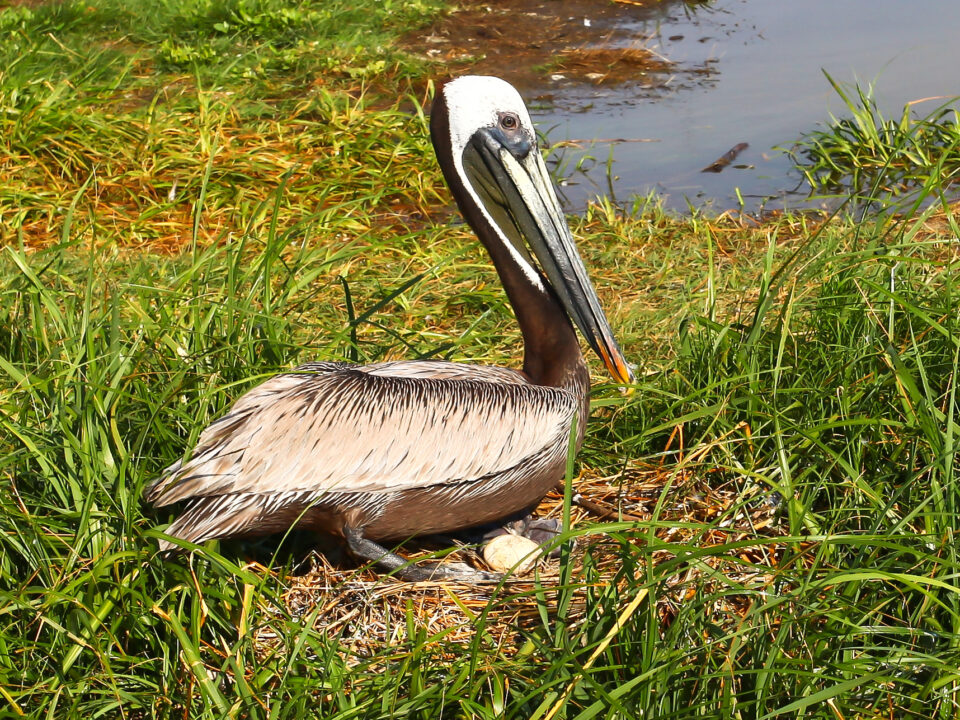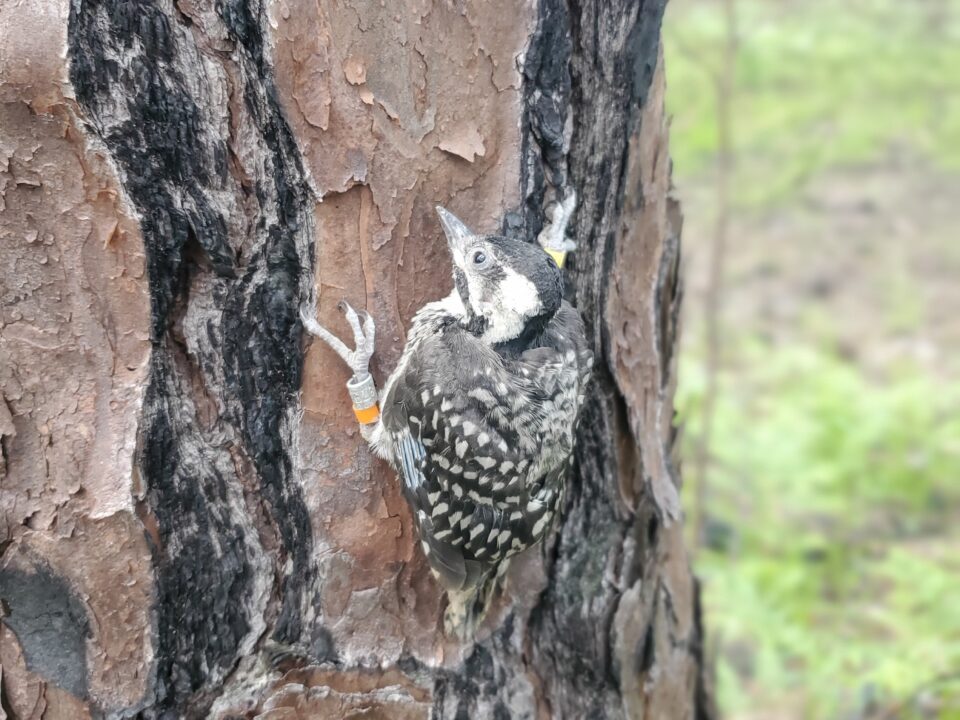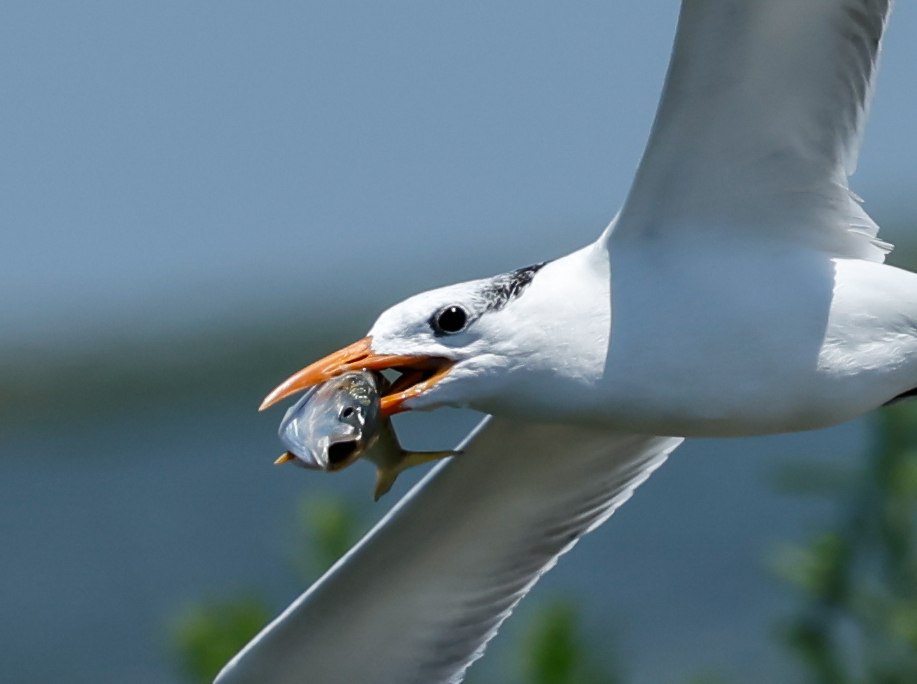Yellow-crowned night herons adjust to changing climate – continued
Assessment of shorebird hunting policies published
June 27, 2016
Virginia bald eagle breeding population exceeds 1,000 pairs
June 30, 2016
Yellow-crowned Night Herons are showing a clear response to the earlier and earlier appearance of spring temperatures in Virginia. The 2015 breeding season was the earliest recorded with pairs arriving and laying eggs more than 20 days earlier than pairs recorded in the same breeding areas during the 1960s. This trend continued in 2016 with pairs arriving and laying eggs (on average) a full week earlier than 2015. The birds are proving to be a sensitive barometer of shifts in regional temperatures.
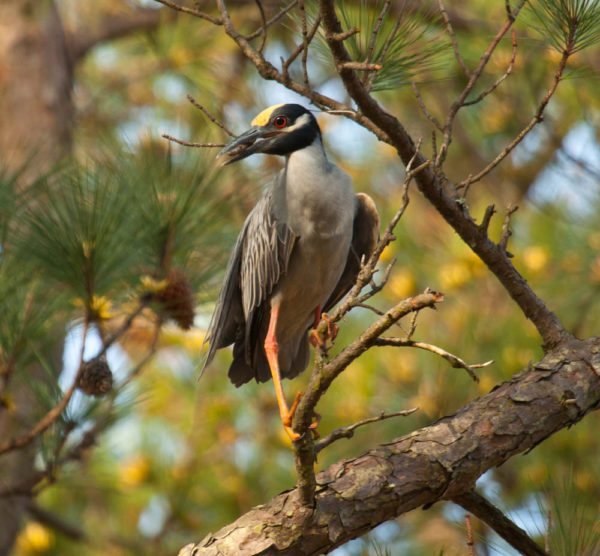
A male yellow-crowned night heron collects nesting material in March within a Norfolk, Virginia colony. The bird has returned and initiated courtship more than three weeks earlier compared to the 1960s. Like many herons, the legs of breeding adults change to a bright coral as they come into breeding condition. Photo by Bryan Watts.
The yellow-crowned night heron is primarily a tropical species with four of the five living forms being sedentary and confined to tropical latitudes. All forms are crab specialists, exploiting a wide range of crabs adapted to their locality. A study of crab use in Virginia during the 1980s (Watts 1988) collected and identified more than 2,000 crab claws from under nests and determined that three species including the mud fiddler, the red-jointed fiddler, and the white-fingered mud crab accounted for 94% of the diet with the sand fiddler, ghost crab, blue crab, mole crab, toad crab, and common mud crab accounting for the remainder. The three dominant species occur in salt marshes and associated shallows.
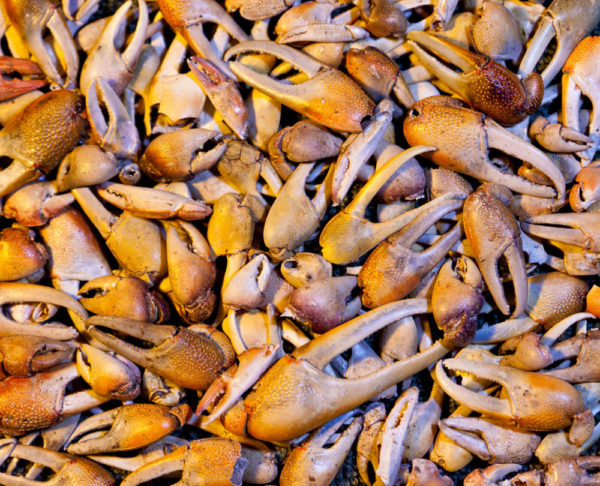
Crab claws collected under yellow-crowned night heron nests in Norfolk, Virginia. The most numerous claws are from the mud fiddler (long claws with smooth surfaces), the red-jointed fiddler (long claws with rough surfaces), and the white-fingered mud crab (short and rounded claws). Others in the collection include small blue crabs and toad crabs. Photo by Bryan Watts.
Yellow-crowned night herons that breed in Virginia are migratory and their arrival on the breeding grounds is closely tuned to the emergence of crabs in the spring. Emergence of crabs is very sensitive to temperature. When the temperature rises above 15°C (59°F), they emerge from their burrows and become active. Crabs retreat to their burrows and move underground when the temperature drops below 15°C. The date in spring when temperature passes the 15°C threshold is advancing, extending the season of fiddler availability. Yellow-crowns appear to be adjusting to the shift in season.
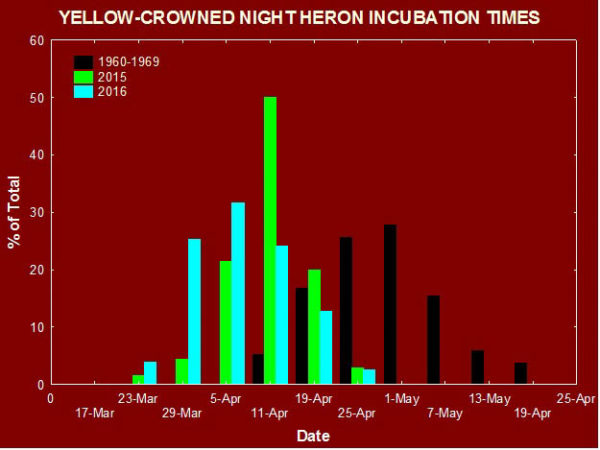
Comparison of yellow-crowned night heron incubation dates in 2015, 2016, and the 1960s in Tidewater Virginia. Yellow-crowns are arriving earlier and laying eggs earlier compared to the 1960s. Data from CCB.
The 2016 season is the second in a multi-year study to compare the breeding ecology of the yellow-crowned night heron to a study conducted within the same colonies in the 1960s. The ten-year dataset from the 1960s was collected by Constance DuPont Darden. Mrs. Darden (former first lady of Virginia) was passionate about yellow-crowns, and her information has contributed a great deal to our understanding of the species. Her dataset is housed within The Center for Conservation Biology.
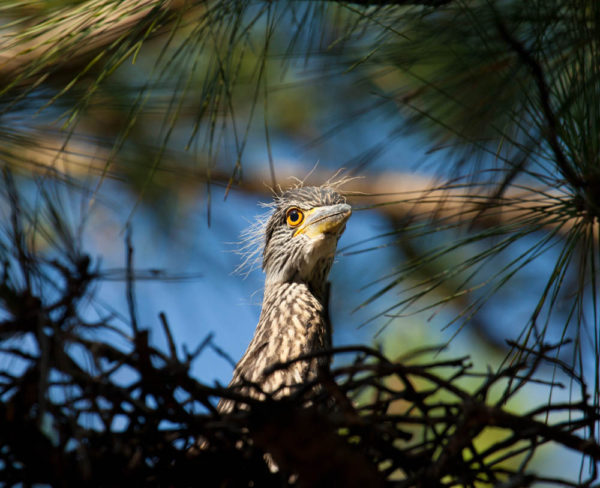
A young yellow-crowned night heron peers over the edge of its nest in May when most of the pairs during the 1960s would still be on eggs. Many broods are now fledging a full month earlier than those observed during the 1960s. Photo by Bryan Watts.
Climate change is a change in the statistical properties of the climate system over long periods of time. Regardless of the underlying causes of this change, the earth has been experiencing a documented shift in climate for decades. How wild species respond to changes in climate will determine many aspects of their ecology including their geographic distribution, the timing of significant events in their annual cycle, and for some their survival. Understanding the implications of these shifts is a growing focus of conservation biology. Because of both their migratory status and specialized diet, yellow-crowned night herons represent a model system for investigating how species respond to a changing climate.
Written by Bryan Watts | bdwatt@wm.edu | (757) 221-2247
June 28, 2016

